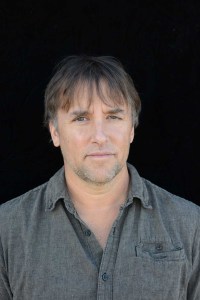
Richard Linklater‘s Boyhood is a creatively imagined and realized coming-of-age story that follows the life of a boy, Mason (Ellar Coltrane), from age five to age 18, growing up alongside his parents (Patricia Arquette and Ethan Hawke). Linklater, who also wrote the script, has previously received two Academy Award nominations for best writing of an adapted screenplay — in 2014 for Before Midnight which he shared with Julie Delpy and Hawke, and in 2005 for Before Sunset, which he shared with Delpy, Hawke and Kim Krizan.
The story, which took 12 years to make, was dreamed up by Linklater because he felt compelled to express something about being a child. “The story evolved in my mind in as far as wanting to express something about growing up or being a parent,” said Linklater. Unable to come up with the one moment that defined childhood from his own memories, he embarked on a storytelling journey of one childhood through 12 capsules of moments of life including road trips, family dinners and from birthdays to graduation. “I really was more obsessed with the whole process of growing up.”
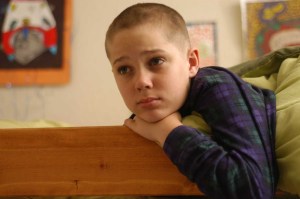
Once the idea was fully formed and he could see the film play out in his head, he had to face the logistic challenges of making a film like Boyhood: It would take 12 years, it would be difficult to get funding for and it would be downright impractical to make a film this way. But, as this was the way Linklater had solved the narrative problem of telling the story of childhood, he set out to turn his ideas into a realized film.
“It was a real gift to write, shoot, edit and then do that again,” Linklater noted. “You don’t usually get to edit and then write some more but I got to do that over and over.” This unique way of working allowed him to continue shaping the film again and again over time. He enjoyed the process immensely. It was especially creative. “From a storytelling standpoint, I was able to feel my way through the story both personally and technically. I had a year to think, ‘5th grade, OK, what was going on then?’ I had an outline, the whole story was sort of set. But within the minutiae of that year — and this film is just a collection of intimate moments — it’s like what moment? It was a great way to go through the world for 12 years with your antenna out, thinking, ‘Oh does that have a place? What will be interesting? What will be interesting 10 years from now?'”
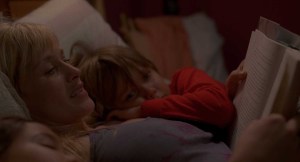 Making the film in 12 years also made the story more realistic. Shooting a year and then taking a year off to think about it was a productive way of working for Linklater and the cast. Experiencing each year that way made everything feel more true. “For instance, I knew near the end that Mason is going to say goodbye to his mom and go to college, so the image of her alone sitting at a table, that was there from the beginning of the movie but we had to go though those 12 years to get that emotion just right. I couldn’t have totally anticipated it and I don’t think Patricia could have played it the way she does. The methodology of this is so intertwined with the story.”
Making the film in 12 years also made the story more realistic. Shooting a year and then taking a year off to think about it was a productive way of working for Linklater and the cast. Experiencing each year that way made everything feel more true. “For instance, I knew near the end that Mason is going to say goodbye to his mom and go to college, so the image of her alone sitting at a table, that was there from the beginning of the movie but we had to go though those 12 years to get that emotion just right. I couldn’t have totally anticipated it and I don’t think Patricia could have played it the way she does. The methodology of this is so intertwined with the story.”
Reuniting with the cast year after year was a great joy for Linklater. Working on finding the form of the year together was a favorite part of the directing process for him. Writing the script and the rehearsals became one. An interesting aspect of directing the actors over 12 years was the way the actors came transformed every year; every year they were different from the year before, especially Coltrane. “The little kid became a different person. I’m still directing Ellar Coltrane but he’s a different person by the later part of the film than when I started. It’s pretty wild to be telling the same story and yet things have changed so much,” Linklater said.
 The cinematography is by Lee Daniel who is known for Before Sunset and Before Sunrise (1995) and Shane F. Kelly who is known for his work on A Scanner Darkly (2006). The particular challenge on this film was not just to find the right look and tone, but to maintain it consistently for a dozen years. “It’s kind of technically 12 different films, but its goal is to be one film,” Linklater said. “So that becomes the fun part. It was easy to decide to shoot on 35mm negative that would aid in a consistent look.”
The cinematography is by Lee Daniel who is known for Before Sunset and Before Sunrise (1995) and Shane F. Kelly who is known for his work on A Scanner Darkly (2006). The particular challenge on this film was not just to find the right look and tone, but to maintain it consistently for a dozen years. “It’s kind of technically 12 different films, but its goal is to be one film,” Linklater said. “So that becomes the fun part. It was easy to decide to shoot on 35mm negative that would aid in a consistent look.”
Longtime collaborator and editor Sandra Adair is known for her work on Before Sunset. Usually in postproduction, the writing and shooting phase has ended, but on this film the structure took a more interesting and unconventional turn. The storytelling process was able to happen a little bit more in the editing room than usual. “Usually with editing you’re just working with the material you already shot, but this time we were editing in a film that was still in the process of becoming who it wants to be.”
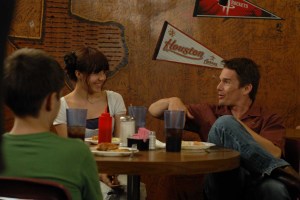 Telling the story by editing year after year benefited the process. “They always say editing is rewriting, which it is,” said Linklater. “You are rewriting in the editing quite a bit. But on this film it was almost part of the writing process of what was coming next so it’s unique.” The unusual circumstances that were born out of the story the director was telling were welcomed. In fact, he would choose to make every film by editing this way if he could. But usually there’s not the time to do something like this. On this film though time took on another dimension of filmmaking. It became an embraced resource.
Telling the story by editing year after year benefited the process. “They always say editing is rewriting, which it is,” said Linklater. “You are rewriting in the editing quite a bit. But on this film it was almost part of the writing process of what was coming next so it’s unique.” The unusual circumstances that were born out of the story the director was telling were welcomed. In fact, he would choose to make every film by editing this way if he could. But usually there’s not the time to do something like this. On this film though time took on another dimension of filmmaking. It became an embraced resource.
With over 140 scenes in the movie, the production design took immense work. Creating a real world might seem like a simple thing at first, but it’s a task filled with challenges that production designers Rodney Becker and Gay Studebaker took on. Carrying the design from year to year and showing the progression was a goal that required dedication. “Even an item like a kid’s toy or a book, they age,” explained the director. “It was a fun way to work, to have this multi-year intertwined thing.”
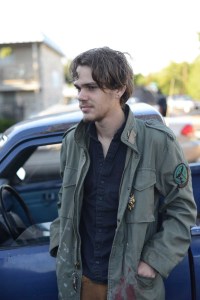 Much thought and consideration were given to the living spaces. All the creative choices were character based. When they move, when they leave one world and enter into another, we get a sense of where they are in life, where they might be shopping for their furniture, how they’re doing financially. “It’s all thought out, designed, decorated, very deliberate and not easy, especially given our limited resources and tight schedule but you do your work with a very dedicated crew who came back year after year after year,” Linklater said. “It’s really special to see the dedication and momentum building with the crew themselves, how invested they were. No one lost interest, it kind of went the other way, they gained interest. We all get we were in the middle of something totally unique.”
Much thought and consideration were given to the living spaces. All the creative choices were character based. When they move, when they leave one world and enter into another, we get a sense of where they are in life, where they might be shopping for their furniture, how they’re doing financially. “It’s all thought out, designed, decorated, very deliberate and not easy, especially given our limited resources and tight schedule but you do your work with a very dedicated crew who came back year after year after year,” Linklater said. “It’s really special to see the dedication and momentum building with the crew themselves, how invested they were. No one lost interest, it kind of went the other way, they gained interest. We all get we were in the middle of something totally unique.”
Costume designer Kari Perkins, who is known for Mud (2012) and Bernie (2011), has been collaborating with Linklater for 22 years. “She’s just so intuitively smart about the characters and where they’re at and also the kind of palette of the film, to try to reflect very subtle changes,” noted the director. “Every character had their own trajectory. The kids started with their parents dressing them then as they got older, they started picking out their own clothes, expressing themselves more. This sense of expression, how the self emerges, was one of the major themes of the film and canvas of costumes was a perfect place to articulate this. Kari did a wonderful job and it’s understated. It’s like you’re not even meant to notice.”
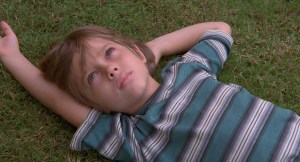 When it came time for the last shot, everyone working on the film experienced the specialness of the event. This moment is one of the director’s favorites. “The last shot of the movie is the last thing we shot so it was pretty cool to be out there. You can imagine the notion of the martini shot, the last shot of the day, it’s kind of a big event, and then the last shot of a whole production even if you’ve shot 25 to 50 days, it has a certain kind of added impact or excitement to it so you can imagine that times 12, after 12 years of getting to the last shot of it, you could just feel it. We were all kind of floating.”
When it came time for the last shot, everyone working on the film experienced the specialness of the event. This moment is one of the director’s favorites. “The last shot of the movie is the last thing we shot so it was pretty cool to be out there. You can imagine the notion of the martini shot, the last shot of the day, it’s kind of a big event, and then the last shot of a whole production even if you’ve shot 25 to 50 days, it has a certain kind of added impact or excitement to it so you can imagine that times 12, after 12 years of getting to the last shot of it, you could just feel it. We were all kind of floating.”
The film has been nominated for six Academy Awards, for actor in a supporting role (Hawke), actress in a supporting role (Arquette), best picture, directing, film editing and writing (original screenplay).





